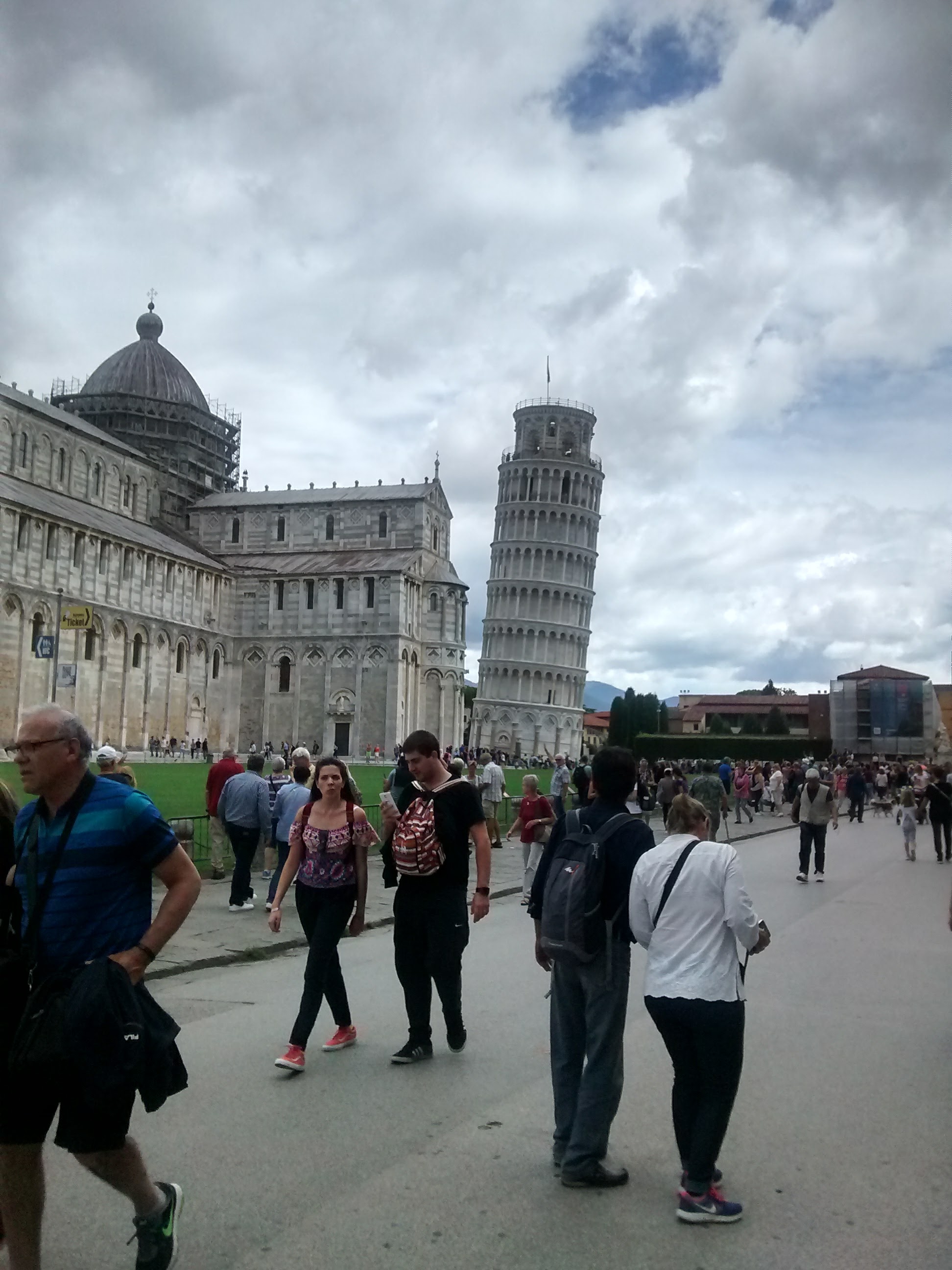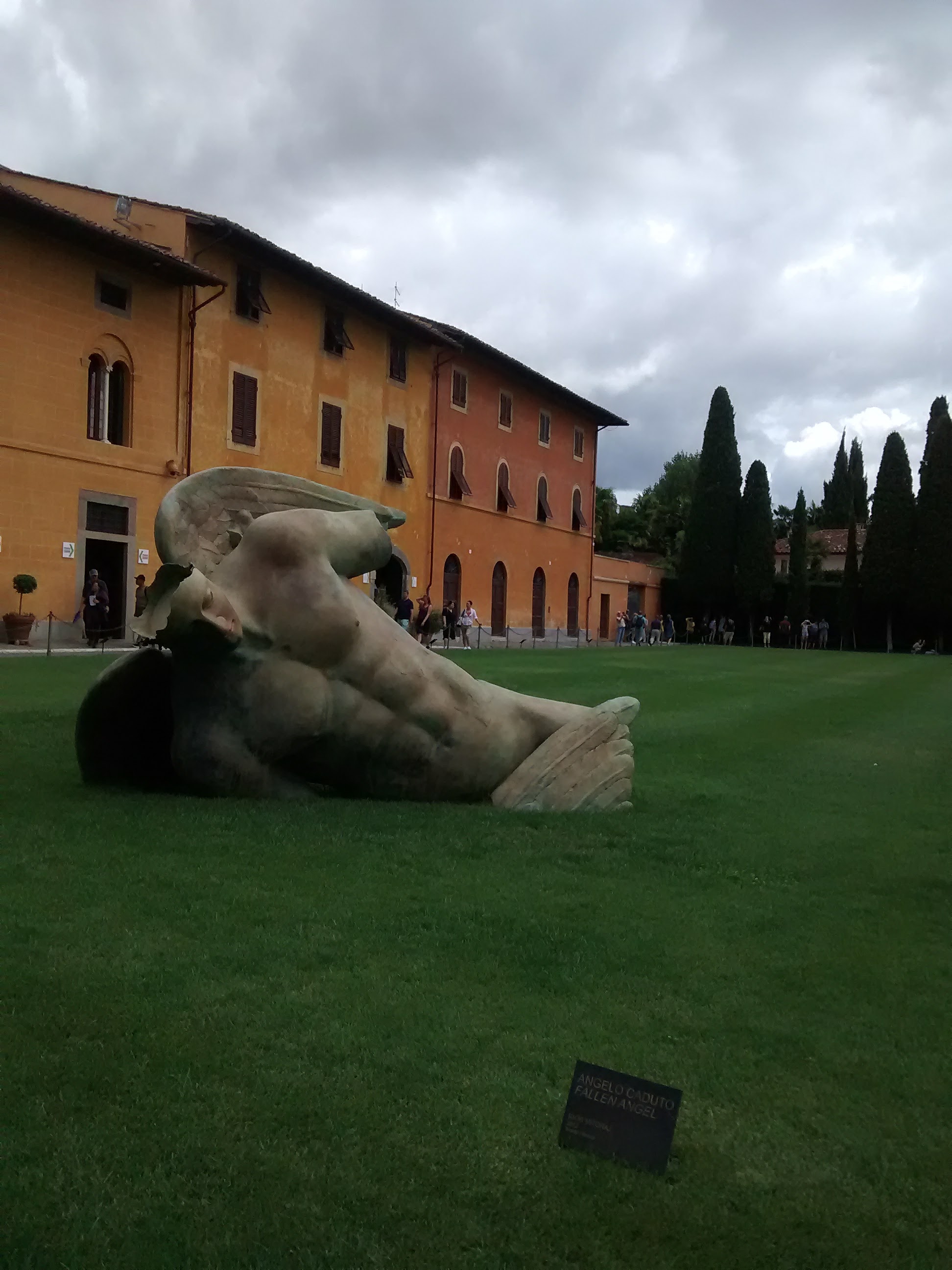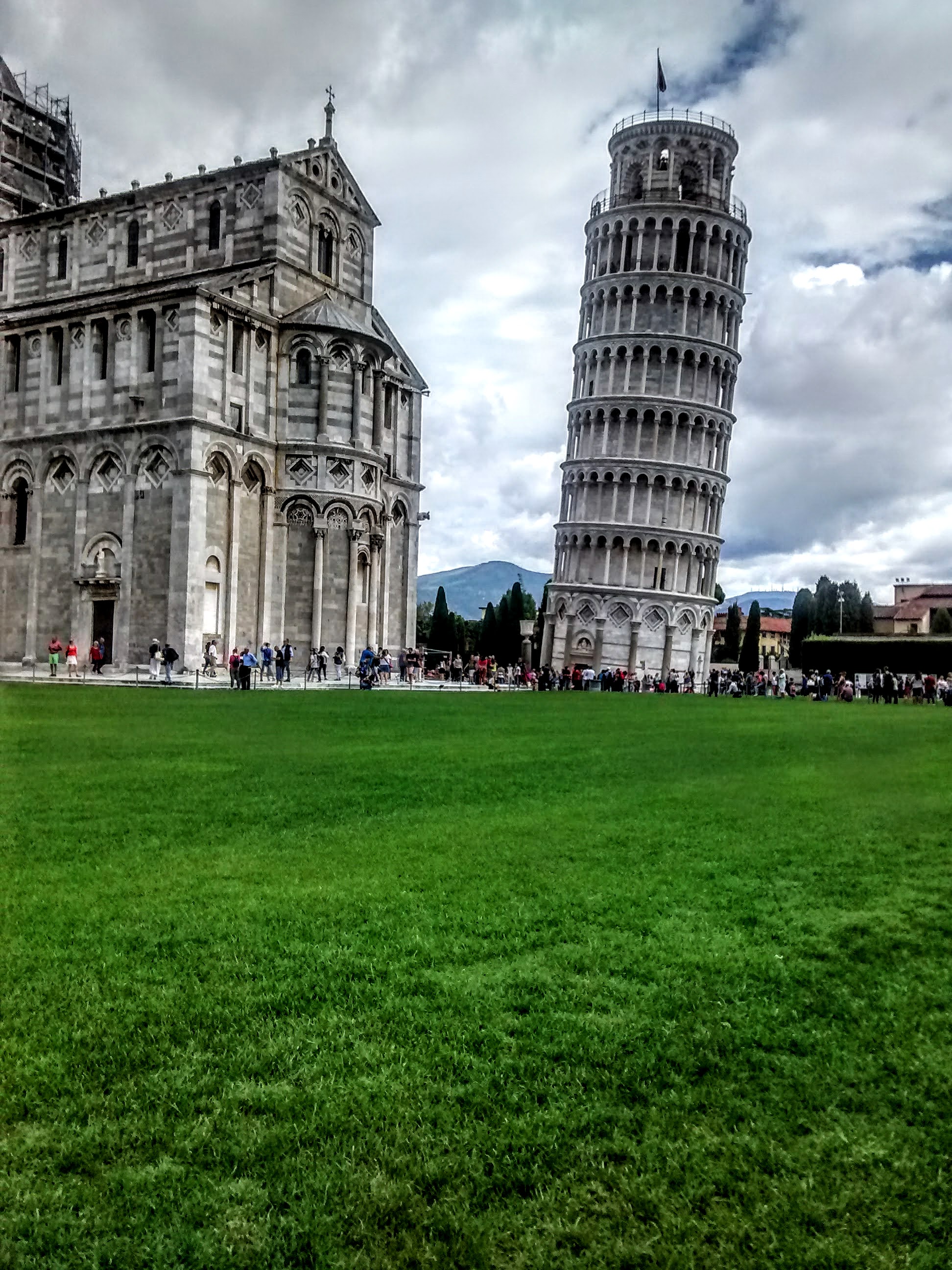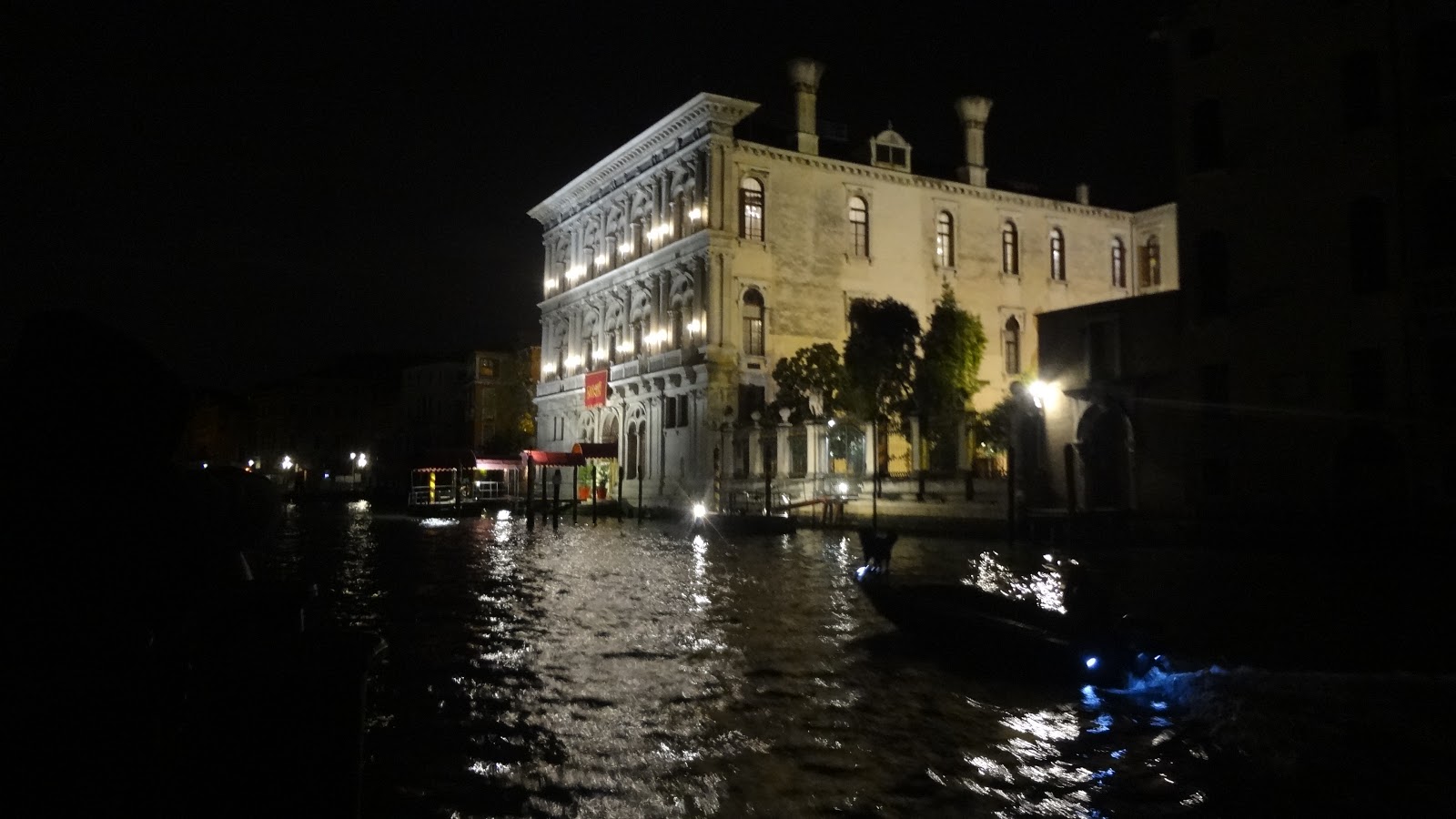Pisa
Pisa - the Leaning Tower
There are several trains from Florence to Pisa Centrale. We took the morning train. We were at Pisa Centrale station in about a little more than an hour. Pisa station is one of the major railway junctions of Tuscany. An old station, which opened in 1871, has a beautiful exterior.
We boarded a bus from just outside the station, which took us directly to the Leaning Tower. Located at the Piazza Dei Miracoli (Square of Miracles), this walled area is regarded as one of the finest architectural complexes in the world. The most astonishing monument at this UNESCO World Heritage site is a campanile (a free-standing bell tower) 186ft11inch tall on the higher side and weighing around 14.5 tonnes which started tilting during its construction in
the 12th century. It went on leaning through the centuries until remedial measures were taken about 25 years back to arrest further tilt. Finally, the tilt has been reduced to about 4 degrees. The construction of the tower took almost two centuries. Seven bells were installed in the belfry. Each bell represented a musical note in the major scale. The largest bell was installed in 1655. Galileo, who lived in Pisa between 1589 to 1592 dropped two cannonballs of different masses from the tower to demonstrate that their speed of descent was independent of their mass in keeping with the law of free fall. Though modern tools and tackles have been used to arrest the chances of the tower toppling over in another 200 years, the mystery remains as to how this most vulnerable bell tower remained intact even after four strong earthquakes since the year of its inception i.e. 1200 AD. Besides the free-fall experiment of Galileo Galilei, the tower was used as an observation post by the German army during WW II. The Allies knew about it but refrained from any sort of artillery strike which could inflict irreparable damages to the heritage site.
We spent almost half a day inside the complex awestruck by the strange Romanesque and Gothic-style campanile, taking photographs from various angles of the Leaning Tower. What is remarkable is that despite a tilt of hardly 4 degrees which would be an unobtrusive angle if drawn on a standard A4-sized paper, becomes a dizzying sight when blown up to the height of the tower. Yes, the leaning was so perceptible that I felt scared when I went close to the tower. We also went over to the other three religious edifices in the premises such as the Pisa Cathedral, the Pisa Baptistery, and the Monumental Cemetery. When we came out we bought some souvenirs on the Leaning Tower from a shop run by a lad from Bangladesh.
 |
| Inside Square of Miracles |
Photos by Arundhati Sengupta
Booking.com
















Comments